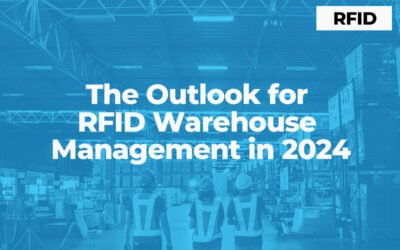Regardless of what you are tracking, software and IoT-connected tracking solutions utilizing technology such as RFID, GPS, and Bluetooth® are frequently used to provide operational visibility through real-time information. This is the solution to both asset and inventory management.

Asset and Inventory Management Software: Defined!
Businesses across all industries manage important equipment that powers their everyday operations. Many have turned to asset and inventory management software to track and manage important data such as location, quantity, condition, and usage, to name a few. Regardless of what you are tracking, software and IoT-connected tracking solutions utilizing technology such as RFID, GPS, and Bluetooth provide operational visibility through real-time information.
When looking for a solution, you may see terms such as asset tracking, inventory management, enterprise asset management, and many more. Functionally, these solutions should track many of the same data points regardless of what you are tracking.
If you have been asking questions like: Where are my assets? How much inventory do I have in stock? What condition is the inventory in? then it might be time to invest in a software solution.
Software answers these questions by tracking various data points such as quantity on hand, usage metrics, location history, etc. and provides data to help you gain a better understanding of everyday operations and how assets and/or inventory are being utilized.

So, what’s the difference between assets and inventory items?
When differentiating between an asset and an inventory item, a few key questions can help guide the discussion:
1. What is the value of the item?
Assets typically have a greater monetary value, which comes with the requirement of real-time tracking. More intensive financial information such as depreciation or disposition value, and maintenance become necessary to track.
Inventory tend to have value at the higher quantity level as opposed to the individual level.
2. How long do I plan on having this item?
Assets are things you plan to keep long term, while inventory represents items that you plan on selling or consuming.
3. If I issue this item out, do I plan on receiving it back or not?
When an asset is assigned or checked out, the expectation is that it will be returned. Inventory items once checked out are deducted from available inventory and not returned.
EXAMPLES
| Assets | Inventory |
| Vehicles | Tires |
| Heavy Machinery | Safety Equipment |
| Laptops | Clothing |
| Specialized tools | Screws |
| Yellow iron (construction equipment) | PPE |
The three terms used to describe trackable goods are assets, consumable inventory, and serialized inventory.
- Assets represent items of higher value that you keep, maintain, and depreciate over time.
- Consumable inventory are items that you typically track at the quantity level and then remove from the system once used or sold.
- Serialized inventory items tend to be a mixture of both; they have higher value which necessitates tracking at the individual level, but the ultimate purpose is still to be sold or used.
Can an inventory item become an asset?
Yes! Items in inventory can be assigned a serial number or other unique value once they are deployed or assigned. You may want to know how many of a particular item you have in inventory, but once assigned, you may want to track more information about it. Laptops are a great example of this transition taking place. As an IT director, I would want to know I have ten laptops in stock, but once I assign one to an employee, that now becomes an asset for which I track usage, maintenance, and life-cycle information.
Can I track assets and inventory in the same system?
With Apptricity, users can access the Asset and Inventory Management solutions simultaneously, leveraging the flexibility to track any asset, consumable inventory item,
or serialized inventory item that the business owns and manages, all from a single system. Apptricity provides various tracking technologies for each to give users the data they need when they need it. We frequently use RFID for asset tracking to provide real-time location services and operational visibility. RFID inventory tracking is another solution we have deployed to provide information about inventory quantities in warehouses, vehicles, and storefronts.
Why is Apptricity the best asset and inventory management software?
In Apptricity tracking terms, “asset,” “inventory,” and “equipment” are interchangeable. With this in mind, enterprises consider Apptricity as the best asset and inventory management software because of its accuracy, reliability, and ease of use.
Trusted by the world’s leading brands such as Verizon, Brinks, AT&T, and Komatsu and government organizations like the US Army and US Air Force, Apptricity leverages a combination of RFID tracking technology, Bluetooth® Low Energy (BLE) beacons, patented edge devices, and proprietary software to provide real-time tracking of assets and inventory.
Apptricity’s system boasts up to real-time location tracking, which is critical for enterprises needing to track assets, inventory, fleets or any portion of their supply chains. Additionally, the system easily integrates with other enterprise systems, such as enterprise resource planning (ERP) to provide a comprehensive solution for asset and inventory tracking. Overall, Apptricity’s Asset and Inventory Management Software solution is a top choice for enterprises looking to improve their tracking capabilities. If you would like to learn more, take a glance of the software in action to view how this technology can streamline tracking for your enterprise.


